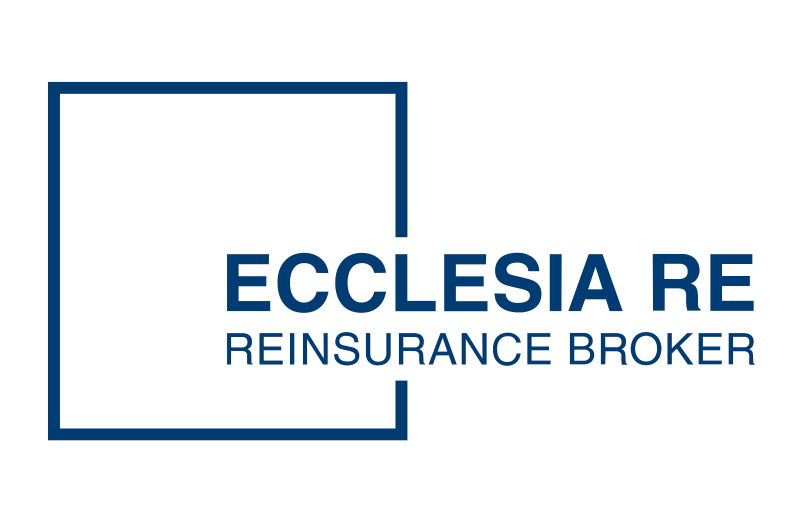There are nearly 60,000 publicly traded companies in the world, so it would take our overworked team of MBAs and their children’s children to cover them all. Fortunately, all of our writers are contractually obligated to employ their progeny with Nanalyze in perpetuity, so we’ll get there eventually. In the meantime, we often kick the can on profiling companies that don’t easily slot into our disruptive tech portfolio because our funds are already committed, the theme doesn’t fit, or we just got stoned and forgot about them. Mercado Libre (MELI) falls somewhere along that spectrum, even though we’re a big, big fan of Latin American wrestling culture. Oh, (*checks notes*) wait, that’s Lucha Libre. It turns out Mercado Libre is the biggest e-commerce company south of the U.S. border, and is also rapidly growing its fintech business in e-payments and nontraditional banking as well.
The comparisons to Amazon, PayPal, Square, masked wrestlers et al are inevitable. Readers have been nudging us to cover this $50 billion company for a while. It’s also one of top three holdings in the ARK Fintech Innovation ETF (ARKF), and even appears among the stocks that make up the popular tech-heavy Invesco QQQ ETF (QQQ) that tracks the Nasdaq-100 Index. Where there’s smoke, we light a fire under one of our MBAs to see what all the fuss is about.
About Mercado Libre Stock

Mercado Libre was founded way back in 1999, just five years after Jeff Bezos launched Amazon, by a guy named Marcos Galperin, operating out of a garage in Buenos Aires. A graduate of Stanford Graduate School of Business, Galperin’s rags-to-riches story is now a business case study at his alma mater. (Meanwhile, our MBAs are involved in a class-action lawsuit after their business school was allegedly swallowed by a sinkhole, along with their diplomas.) The company IPO’d in 2017, 10 years after Amazon went public. Today, it sports a market cap of more than $50 billion and raked in $7 billion in revenue last year across its 18 markets in Latin America, and will likely break $10 billion in 2022 revenue.

If for some unknown reason you had invested some of the money you earned selling weed to high school students by buying stock in Mercado Libre, you would have enjoyed a +3,500% return on your money over the last 15 years against less than +500% in QQQ. The last 12 months or so, however, haven’t been especially kind to Mercado Libre stock, which is down about 35% over that timeframe, which could make it an attractive buy if it still has room to run.
The E-commerce Market in Latin America
Latin America is often an afterthought when it comes to conversations about the world’s great business markets. Of course, the region encompasses a diverse set of cultures, languages, and economies. There are about 650 million people in Latin America, representing about $5 trillion in gross domestic product (GDP). Compare that to Europe, which is home to some 750 million people but with more than triple the GDP. In addition, Brazil and Mexico account for about $3 trillion alone, and the other Latin American markets after those two begin to shrink dramatically, with Argentina accounting for about $500 billion in GDP.

The occasional coup and constant corruption probably don’t help matters, but there are signs that the regional market is growing up. That’s particularly been the case in e-commerce, where Latin America has been the fastest-growing regional e-commerce market globally, with sales growing 37% to $85 billion in 2020, according to Fidelity International. E-commerce penetration in Latin America is expected to double from 8% today to 16% in 2025, FI reported, and could reach 50% “over the next few decades.” Three of the top ten countries for e-commerce growth are located in Latin America.

Sitting atop of the e-commerce throne – at least where it matters most – is Mercado Libre, an Argentine company headquartered in Uruguay, the first country in the world to legalize weed. Not surprisingly, its three biggest markets are Brazil, Argentina, and Mexico.

In 2021, Brazil accounted for about 55% of all revenues, followed by Argentina at nearly 22% and Mexico at 16.6%. The other 15 markets combined are just 6.6%. The numbers have shifted a bit through the first three quarters of 2022, but are close enough. However, total revenue is already at $7.5 billion – and the holiday season has yet to hit.
How Mercado Libre Makes Money
Mercado Libre splits its business into two segments: e-commerce and fintech. The former, which represents the various Amazon-like marketplaces it operates in each country, generates revenue from transaction fees, shipping fees, classifieds, ad sales, and other miscellaneous fees. Taking another page from the Amazon playbook, Mercado Libre has its own robust logistics delivery solution, Mercado Envios, especially in its major markets like Brazil. It operates a network of independent neighborhood stores and commercial points to receive and store packages. It even launched its own fleet of dedicated aircrafts covering routes across Brazil and Mexico, with the aim of improving delivery times. While the brand is largely associated with ecommerce, fintech is nearly half of their business now.

Revenue on the fintech side is mainly generated by Mercado Pago, a digital payments platform originally developed to help money flow across the company’s online marketplaces. Now it is a full-blown fintech platform for both digital and in-person transactions, along the lines of PayPal, Adyen, and Block (formerly Square). In addition, Mercado Pago gives out loans to sellers and buyers in Argentina, Brazil, Mexico, and Chile through its Mercado Credito solution, which helps put non-traditional consumers into debt like the rest of us. You can imagine that there are a host of fees related to every transaction and sale through the marketplaces, and other financial services like credit cards. There are still plenty of people to own:

While e-commerce still accounts for more than half of revenue, fintech service revenues are growing much more quickly. And like any good fintech these days, Mercado Libre is dabbling in crypto. In 2021, it launched a cryptocurrency feature in Brazil as part of the Mercado Pago wallet.
Should You Buy Mercado Libre Stock?
That alone shouldn’t persuade or dissuade you from investing in Mercado Libre stock, just be aware that no place is safe from the crypto craze. (The company is only holding something like $15 million in crypto assets for customers, so there’s not a huge amount of exposure.) On the surface, MercadoLibre has a lot going for it. Our biggest concern is that Amazon is now hunting for big game around the world as they look to expand into new geographies using the wealth of knowledge and capital they’ve amassed while becoming one of the biggest companies in the world.
An article by Valor International talks about how Amazon has invested heavily over the past several years, building 11 distribution centers since 2020. The company is just at the beginning of its operations in Brazil with the investments they’re making now expected to show a return in five to 10 years. Seems like they’ve decided to build vs. buy, and Amazon’s war chest of $58 billion means they’ll easily be able to compete on cost. So far, they’ve managed to barely put a dent in the market share pie, but that may change as they use their cash pile to muscle in on the competition.
- Mercado Libre (R$68 billion)
- Americanas S.A. (R$42.2 billion)
- Magazine Luiza (R$39.7 billion)
- Via (R$26.4 billion)
- Amazon (R$10 billion) – includes third-party sales
Amazon’s entry into Brazil – Mercado Libre’s largest market – coincided with their dLocal partnership, so we’re really hoping they succeed based on the investments we’ve made in that region.
Only three countries generate around 95% of all revenue for Mercado Libre, with Brazil accounting for more than half. We don’t like country concentration risk, but most LATAM fintechs seem to share this same characteristic as a result of the aforementioned unequal GDP distribution in the region. Mercado Libre seems content to stick to its Latin American fiefdom, so there’s somewhat limited upside until many of its markets can raise their standards of living and stabilize their economies. Even middle-income countries like Brazil still struggle to maintain growth. Venture investment in Latin America has fallen off a cliff in the last five quarters, according to the big brains at research firm CB Insights. While that’s probably not good for the overall economy of the region, it could be good news for Mercado Libre – less money for competitors to raise.

Unfortunately, Mercado Libre is itself seeing revenue losses from businesses and consumers that owe it money through its credit portfolio, which ended the quarter at $2.8 billion. Consumer credits accounts for 55%, merchant credit 25%, and credit cards the last 20%. The company has deliberately slowed down loan originations as it “recognized the risks associated with a weaker lending environment, particularly in Brazil.” The slowdown, it said, “reflects our prioritization of risk management and our management of the credit business for margin, not growth.”

Keep in mind that collecting interest and fees on credit transactions is currently its fastest-growing revenue stream – almost tripling to nearly $1.5 billion from about $500 million through the first nine months of 2022 compared to last year – and the company is (perhaps wisely) tapping the brakes on that runaway train. As you can see above, margins on interest income are still going up despite rising bad debt. Despite the positive spin, Mercado Libre spent quite a bit of ink describing the credit issues with customers, so it’s a real problem – but we appreciate the transparency.
Emerging Markets Tech Investing
We sold Ali Baba as our largest holding when Jack Ma became less of a fixture and concerns were raised around legally dubious VIE structures. Of all the tech categories we cover, fintech is seeing the most traction in emerging markets around the world, along with late blooming technologies like ecommerce platforms or on-demand food delivery or ride hailing. Whenever a technology arrives late to an emerging market, there always seem to be two main contingents – the OG that’s a global leader and the local incumbents.
There’s a concern here that the environment has become too competitive for Mercado Libre to enjoy their strong growth for much longer. For an idea of just how much money has flowed into Latin American fintech businesses, look no further than all the popular publicly traded stocks on offer. StoneCo (STNE) and Nubank (NU) have both attracted legions of staunch supporters who see past the consumer credit risks towards a big pot of gold at the end of the rainbow.
In an increasingly connected world, it’s important to avoid domestic bias and look outside of America, where half our readers hail from. It’s why we tend to cover many foreign stocks that are flying under the radar. As the recent short report on dLocal goes to show, companies in emerging markets operate differently. Norms around punctuality and attention to detail aren’t like those in developed markets. Many emerging market governments are as corrupt as they come, and navigating these environments can pose perception problems for publicly traded companies. Just look at how the Amazon of China has been fairing lately.
Aside from one emerging markets bet we made in payments, we’re not inclined avoid additional emerging markets fintech or ecommerce exposure given we view these spaces as particularly risky and highly competitive.
Conclusion
Mercado Libre is certainly the Amazon, and even PayPal, of Latin America, but that analogy is no longer the compliment it used to be. Revenue has slowed this year and the U.S. e-commerce giant is currently laying off thousands of workers. Competition has never been tighter, and a 500-lb bald gorilla just entered the room.
But those are signs of a maturing market with slowing penetration (and a bad decision to back EV automaker Rivian). Mercado Libre still has room to run, and its growth story is real and ongoing, but so is the risk and volatility (including currency) in the Latin American market. Lower consumer confidence combined with worldwide inflation usually equates to buying less stuff and not being able to pay for the stuff you already bought. Not exactly a great spot to be in if your fundamental business is to sell stuff on credit or loan money so people can buy more stuff. It’s George Carlin business school 101.
Tech investing is extremely risky. Minimize your risk with our stock research, investment tools, and portfolios, and find out which tech stocks you should avoid. Become a Nanalyze Premium member and find out today!








































